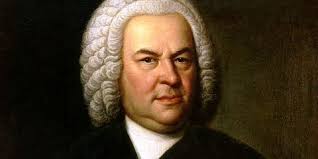Johann Sebastian Bach’s Six Suites for Solo Cello (BWV 1007–1012) stand among the most iconic and enduring works in the entire cello repertoire. Composed during the early 18th century, these suites are not only masterpieces of Baroque music but also profound expressions of the human spirit through a single instrument. Their journey from relative obscurity to universal acclaim is as fascinating as the music itself.
A Mysterious Origin
The exact date of composition for the Six Suites for Solo Cello is not definitively known, but most scholars agree that Bach wrote them between 1717 and 1723, during his tenure as Kapellmeister at the court of Prince Leopold of Anhalt-Köthen. This period was one of great productivity for Bach, as he composed a significant body of instrumental music while working in a secular environment that valued artistic freedom.
Unlike his later position in Leipzig, where he primarily composed church music, Bach in Köthen focused on instrumental works, including the Brandenburg Concertos, violin sonatas and partitas, and, of course, the cello suites.
Structure and Style
Each of the six suites follows a similar structure: a prelude followed by a sequence of stylized dance movements – typically an allemande, courante, sarabande, minuet (or bourrée or gavotte), and gigue. While this format reflects Baroque dance traditions, Bach infused each movement with deep emotional complexity and inventive musical language, pushing the expressive boundaries of the cello.
The suites are written for solo cello without accompaniment, a rarity in Bach’s time. At that point, the cello was largely seen as a supporting instrument, often part of the basso continuo. Bach’s treatment of the cello as a self-sufficient, melodic voice was revolutionary and laid the groundwork for the instrument’s later prominence as a solo voice.
Manuscript and Rediscovery
A curious aspect of the cello suites’ history is the absence of Bach’s autograph manuscript. The most important surviving source is a copy made by his second wife, Anna Magdalena Bach. Although beautifully penned, this manuscript contains ambiguities and lacks certain notational details, leading to centuries of interpretive debate among cellists.
For many years, the suites were largely neglected. They remained in manuscript form and circulated among a small group of musicians, rarely performed in public. It wasn’t until the early 20th century that they began to receive the recognition they deserved.
Pablo Casals and the Revival
The suites’ revival is owed largely to the great Catalan cellist Pablo Casals. At the age of 13, in a secondhand music shop in Barcelona, Casals discovered a copy of the suites and began studying them intensely. At a time when they were still considered pedagogical exercises rather than concert repertoire, Casals recognized their artistic depth and potential.
He spent more than a decade working on the suites before performing them publicly and eventually recording them between 1936 and 1939. Casals’ interpretations were groundbreaking and brought the cello suites into the concert halls and recording studios of the world. His advocacy established them as essential works for every serious cellist and a cornerstone of classical music.
Lasting Legacy
Today, the Six Suites for Solo Cello are universally regarded as masterpieces. They have been recorded and interpreted by countless cellists, each bringing a unique voice to Bach’s timeless music. From the introspective Prelude of Suite No. 1 in G major to the monumental Suite No. 6 in D major, originally intended for a five-stringed instrument, the suites span a remarkable emotional and technical range.
More than three centuries after their creation, these works continue to inspire musicians and listeners alike. They have appeared in films, literature, and even modern dance performances, transcending their origins and affirming their place in the global cultural heritage.
Conclusion
Johann Sebastian Bach’s Six Suites for Solo Cello are more than just a set of Baroque dance pieces—they are profound meditations on sound, silence, and the expressive possibilities of a single instrument. Their path from manuscript obscurity to universal reverence is a testament to their enduring beauty and the vision of the composer who wrote them.


No responses yet